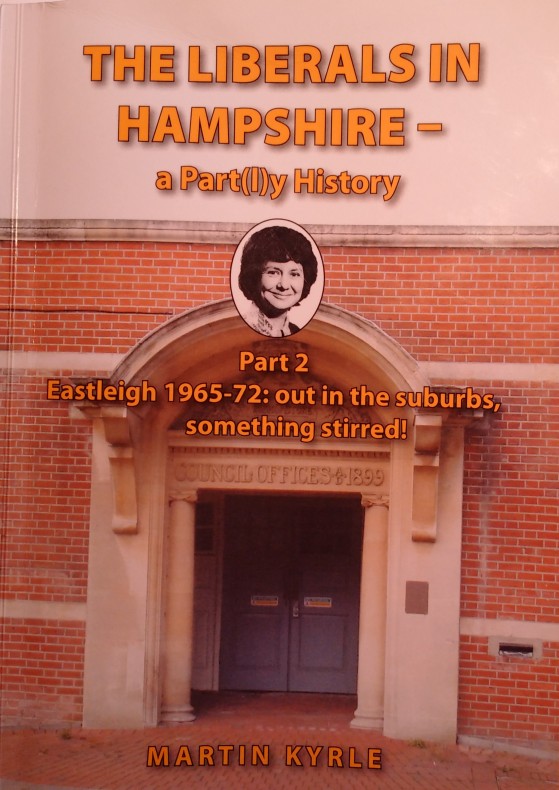How the first Liberal was elected to Eastleigh Council – and how politics didn’t have a golden age
 The second in Martin Kyrle’s planned trilogy on the history of the Liberals and then Liberal Democrats in Hampshire, Eastleigh 1965-72 concentrates, as the title implies, on elections in Eastleigh Borough itself. It was here that, after many attempts his wife became the first Liberal councillor to be elected to that council, setting the ball rolling on a pattern of electoral success that has now seen the party successfully transfer the seat to three different MPs in a row and run the local council for many decades.
The second in Martin Kyrle’s planned trilogy on the history of the Liberals and then Liberal Democrats in Hampshire, Eastleigh 1965-72 concentrates, as the title implies, on elections in Eastleigh Borough itself. It was here that, after many attempts his wife became the first Liberal councillor to be elected to that council, setting the ball rolling on a pattern of electoral success that has now seen the party successfully transfer the seat to three different MPs in a row and run the local council for many decades.
Such coalface histories of local politics in that era are all too rare, but those that do exist – such as the one written about that other areas of extended Liberal and Liberal Democrat electoral success, A Flagship Borough: 25 Years of a Liberal Democrat Sutton Council – share a common warning about eulogising politics as it used to be.
Turnout may have been higher and political party membership considerably higher in the post-war boom years, but the reality of politics back then was a long way away from making it a period we should simply praise by comparison with today.
Despite the far greater number of members available to deliver leaflets or knock on doors, outside of election time this was often all but unknown, even in target wards and marginal seats. It is hard to see why an age when political parties were larger yet much of the time did nothing to communicate with the public should be eulogised by comparison with smaller parties, making more use of non-members and in touch far more often.
As Martin Kyrle writes in this volume:
The custom at the time [the late 1960s] was to fight an election campaign over a period of about three weeks, attend the count, pay the election expenses within the time limit required by law and then spend the rest of the year raising the money to pay for it and start putting some money by for the next election. There was no concept of ‘political campaigning’.
Compared with his previous volume in this series – Part 1, Southampton 1958-1965 – Part 2 is fairly shor,t but the brief main text is supplemented by plenty of appendices which contain the sorts of details that entertain, such as reproductions of press stories and leaflets (including one with a story disassociating the local Liberals from recent activities by the Young Liberals!).
This sort of recording and preservation of the tenor of local politics is invaluable because it is also the sort of material that most often slips between the cracks of history, beyond the reach of future historians.
Though very much a history, the main lessons – such as targeted activity and building up your organisation – are ones which are still very much applicable to 21st century campaigners armed with computers and smartphones, making this not only an enjoyable history but also a handy reminder of the core tenets of effective political campaigning.
You can buy The Liberals in Hampshire – a Part(l)y History Part 2: Eastleigh 1965-72: out in the suburbs something stirred! by Martin Kyrle for £6 or get both it and Part 1 for £10 direct from the author. Email martinkyrleliberal@gmail.com.
Note: a review copy of this book was provided to me by the author.